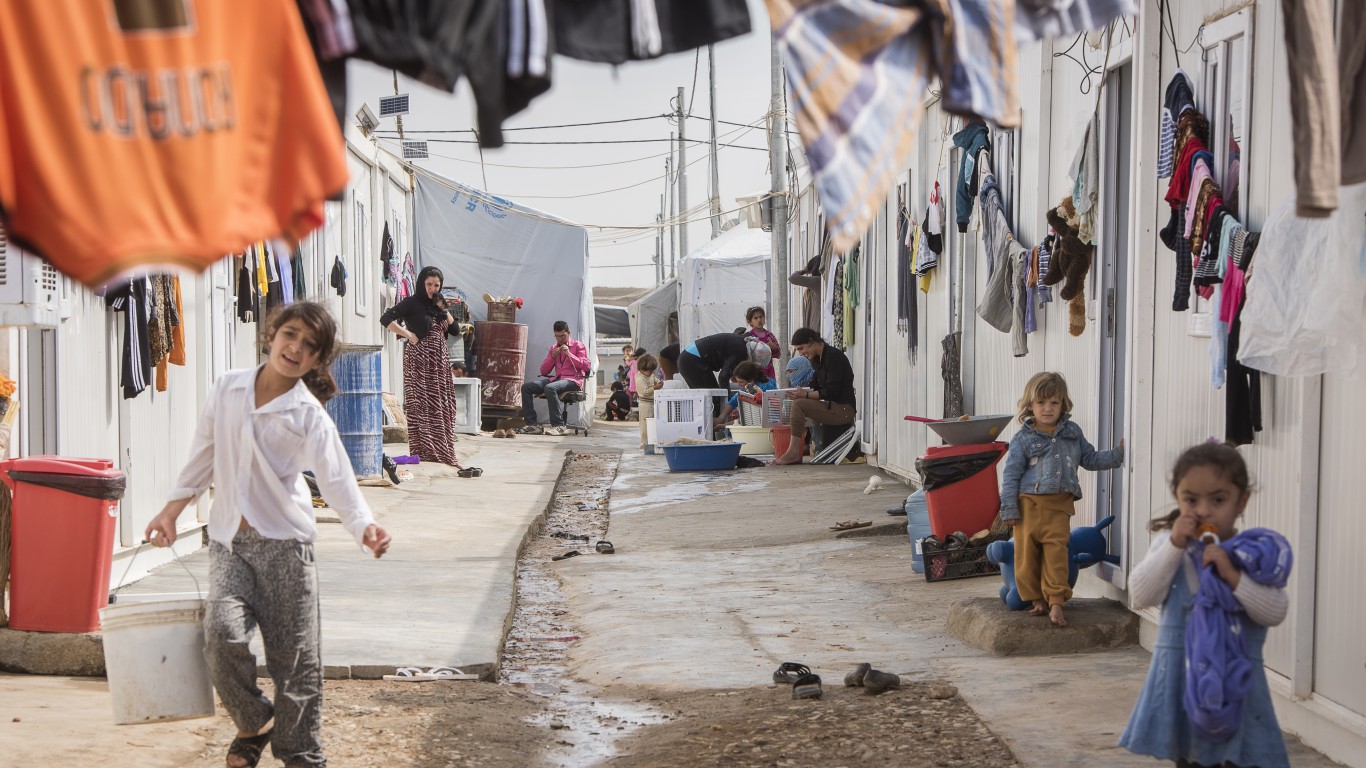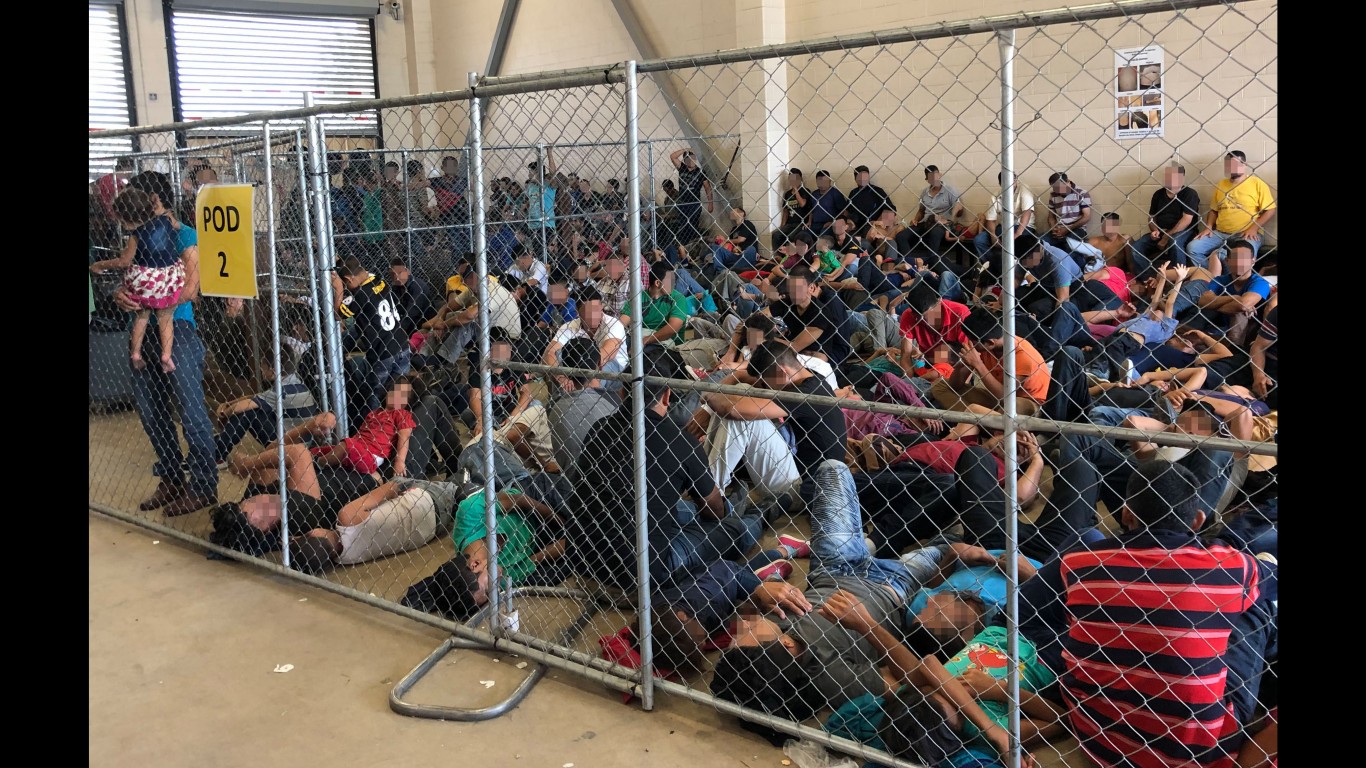
America is often referred to as a melting pot – people from all over the world have come to the U.S. in search of personal freedom, safety, and economic opportunity. More than 44 million people living in the U.S., or 13.6% of the total population, were born in another country.
These immigrants tend to move to certain areas. This may be for a number of reasons. Some want to move somewhere with plentiful job opportunities, while others want to live somewhere with a large community of immigrants from the same place that can make the transition to life in America easier. In these areas, odds are very high that two randomly selected people would be from different parts of the world.
To determine America’s melting pot cities, 24/7 Wall St. used Census Bureau data to rank metropolitan areas based on the likelihood that two residents picked at random would be from two different world regions: the United States, Europe, Asia, Africa, Oceania, Latin America, and other parts of North America.
America’s melting pot cities tend to concentrate in states that make up at least part of the country’s southern border. California metro areas account for 12 of the 25 cities on the list. Texas, with five, and Florida, with two, are the only two other states with multiple metro areas to rank among America’s melting pot cities. Many of these cities are popular destinations for Americans as well as immigrants. These are the cities Americans are flocking to.
In the vast majority of America’s melting pot cities, people from Mexico make up the largest share of foreign-born residents. Mexican immigrants account for about a quarter of all foreign-born American residents. However, more immigrants have come from both India and China than Mexico in recent years.
Click here to see America’s melting pot cities
Methodology
To determine America’s melting pot cities, 24/7 Wall St. ranked metro areas based on the likelihood that two residents picked at random would be from two different world regions: the United States, Europe, Asia, Africa, Oceania, Latin America, and other parts of North America. The measure refers to the birthplace of the current residents.
The index is based on the share of residents of a specific national origin with data from the U.S. Census Bureau’s 2019 American Community Survey and is the sum total of the individual probabilities that two residents will not share a national origin. The same method is used in the USA Today Diversity Index.
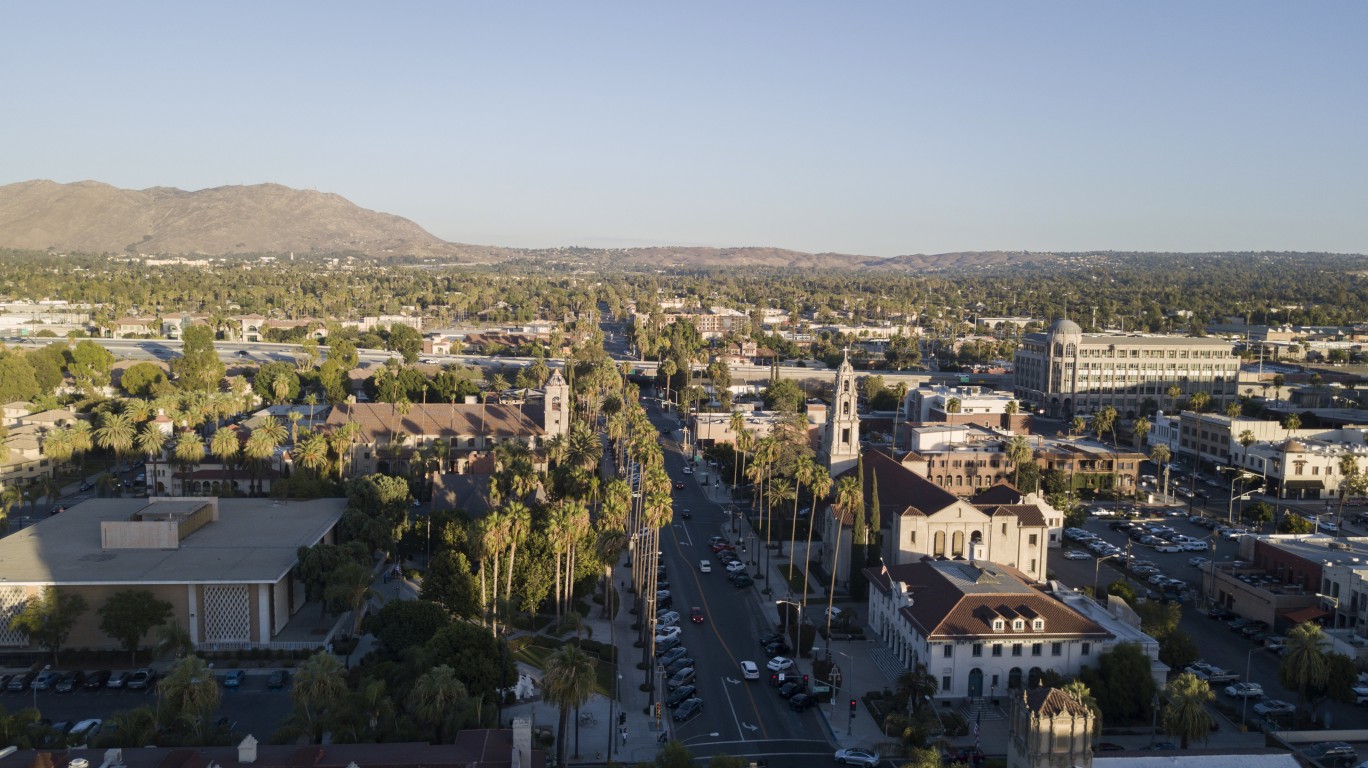
25. Riverside-San Bernardino-Ontario, CA
> Odds two random residents are from different world regions: 35.6%
> Residents born abroad: 21.3%
> Foreign born residents with U.S. citizenship: 50.3%
> Origin of largest immigrant group: Mexico (57.7% of foreign-born pop.)
[in-text-ad]
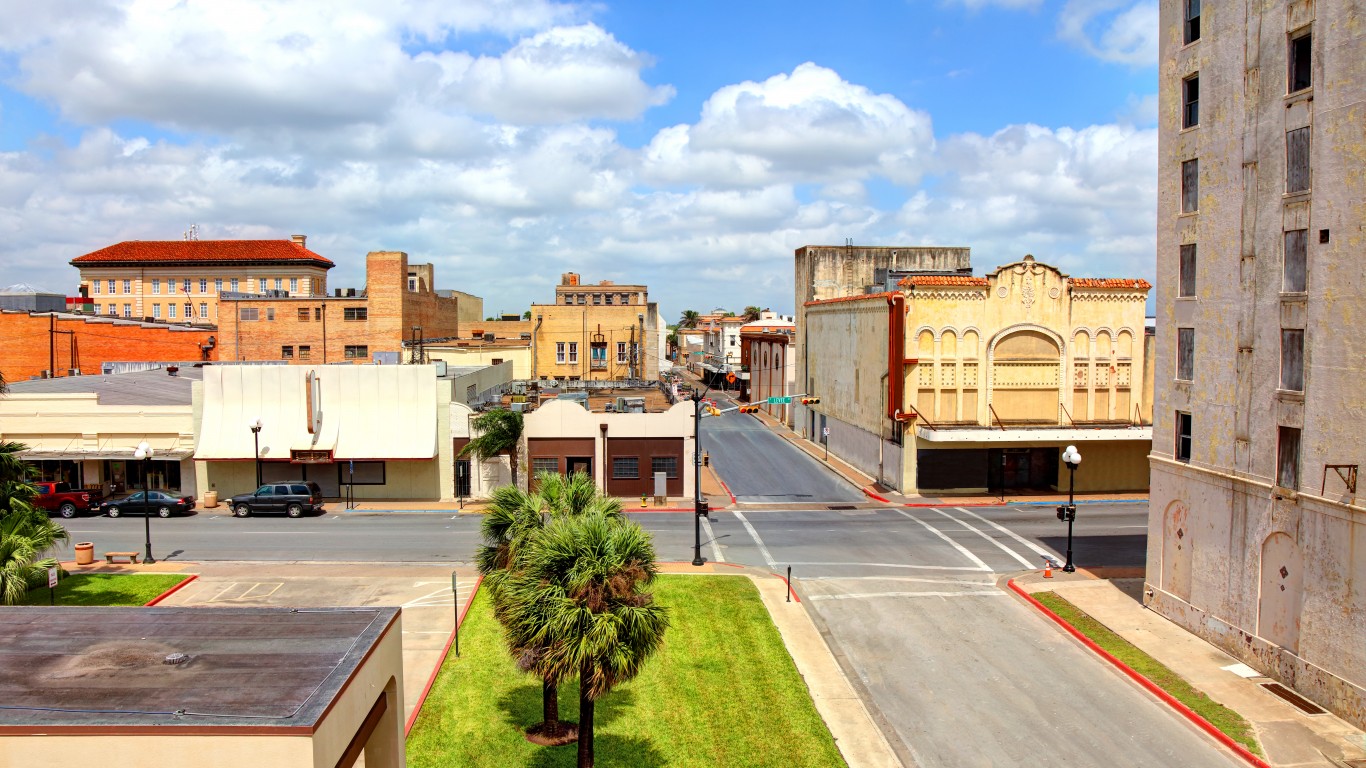
24. Brownsville-Harlingen, TX
> Odds two random residents are from different world regions: 35.9%
> Residents born abroad: 23.0%
> Foreign born residents with U.S. citizenship: 33.2%
> Origin of largest immigrant group: Mexico (91.9% of foreign-born pop.)
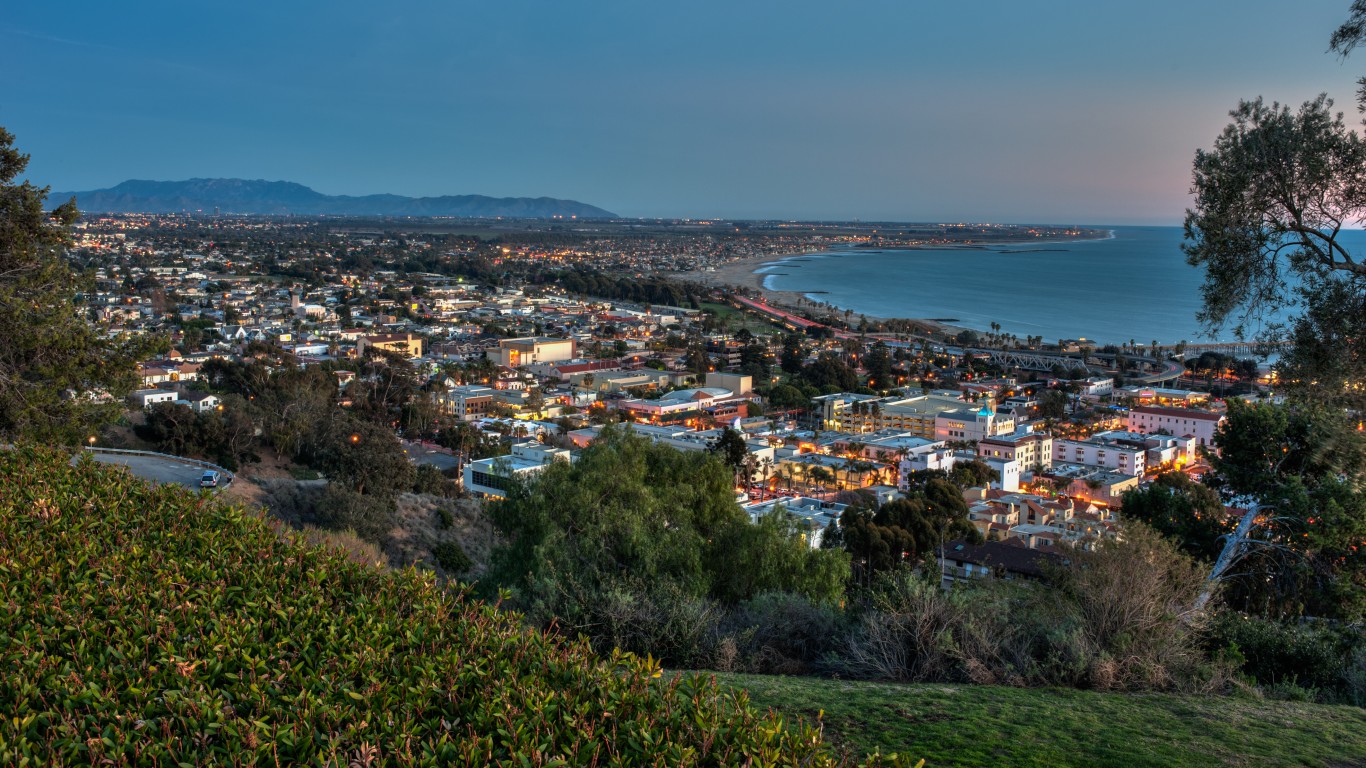
23. Oxnard-Thousand Oaks-Ventura, CA
> Odds two random residents are from different world regions: 36.5%
> Residents born abroad: 21.8%
> Foreign born residents with U.S. citizenship: 49.9%
> Origin of largest immigrant group: Mexico (56.5% of foreign-born pop.)
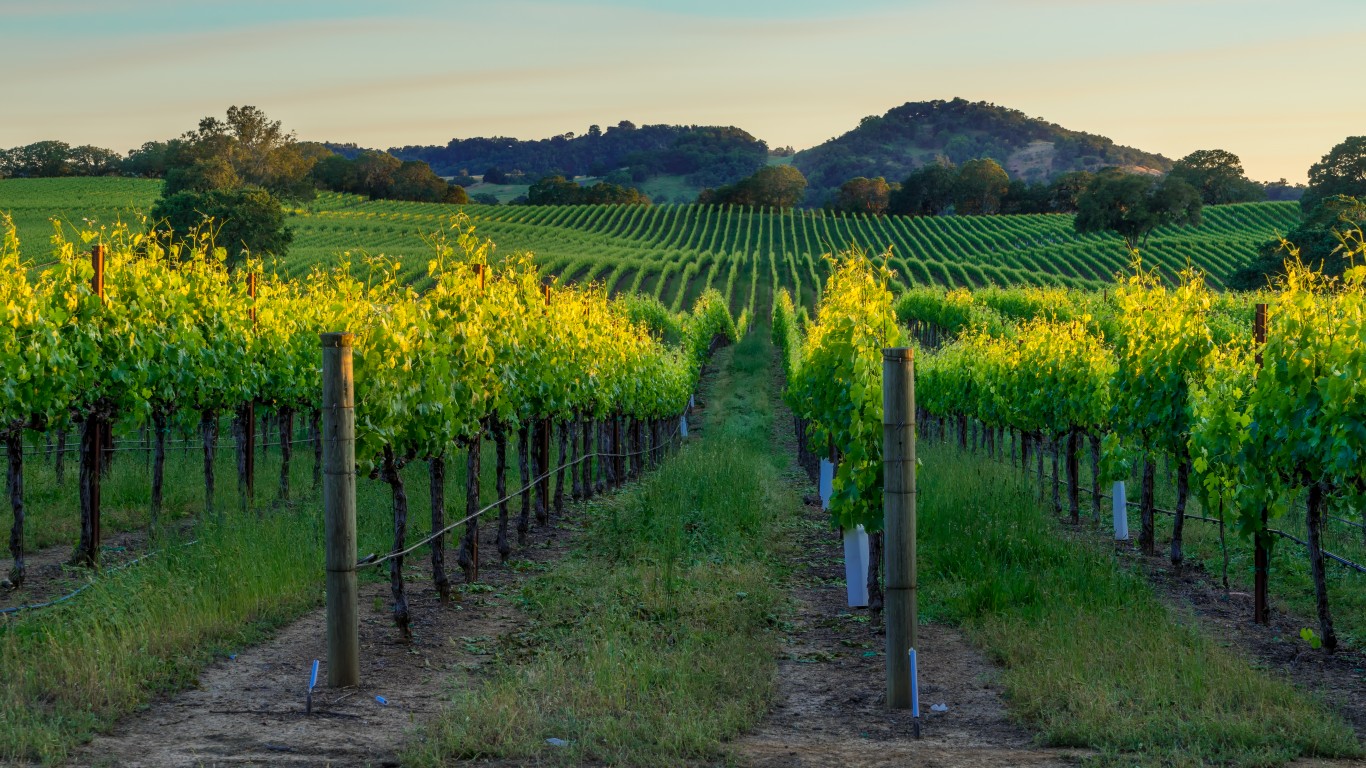
22. Napa, CA
> Odds two random residents are from different world regions: 37.0%
> Residents born abroad: 22.1%
> Foreign born residents with U.S. citizenship: 48.4%
> Origin of largest immigrant group: Mexico (56.8% of foreign-born pop.)
[in-text-ad-2]
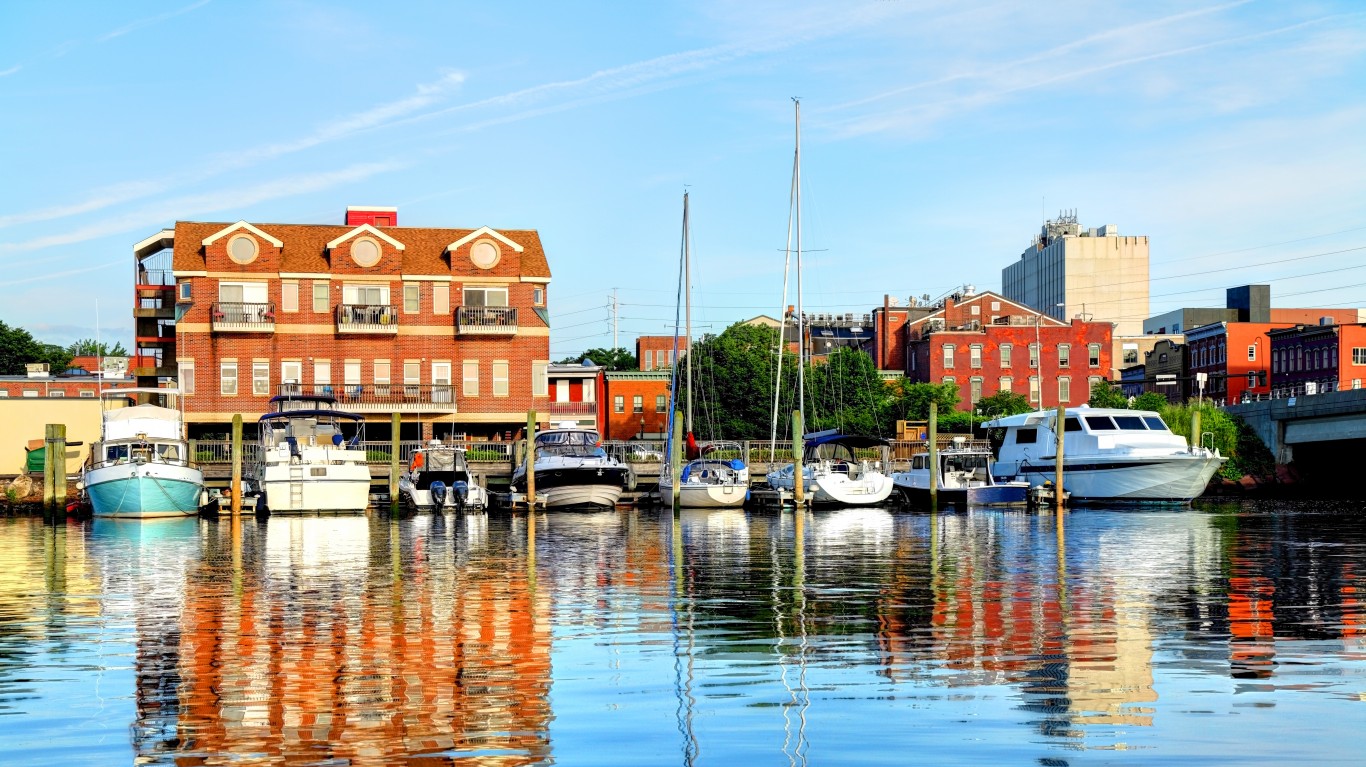
21. Bridgeport-Stamford-Norwalk, CT
> Odds two random residents are from different world regions: 37.3%
> Residents born abroad: 22.0%
> Foreign born residents with U.S. citizenship: 48.4%
> Origin of largest immigrant group: India (6.9% of foreign-born pop.)
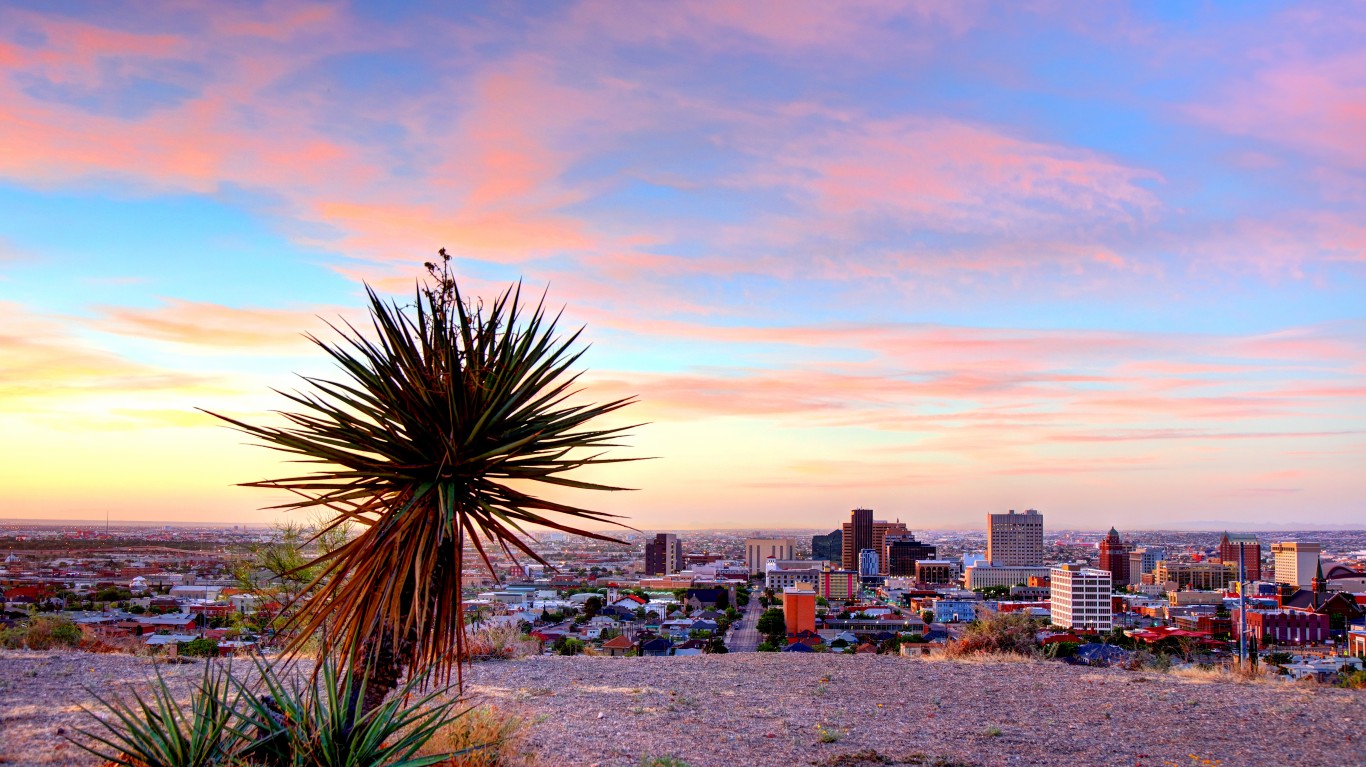
20. El Paso, TX
> Odds two random residents are from different world regions: 37.5%
> Residents born abroad: 24.2%
> Foreign born residents with U.S. citizenship: 47.5%
> Origin of largest immigrant group: Mexico (90.7% of foreign-born pop.)
[in-text-ad]

19. Las Vegas-Henderson-Paradise, NV
> Odds two random residents are from different world regions: 37.5%
> Residents born abroad: 22.2%
> Foreign born residents with U.S. citizenship: 49.9%
> Origin of largest immigrant group: Mexico (36.8% of foreign-born pop.)
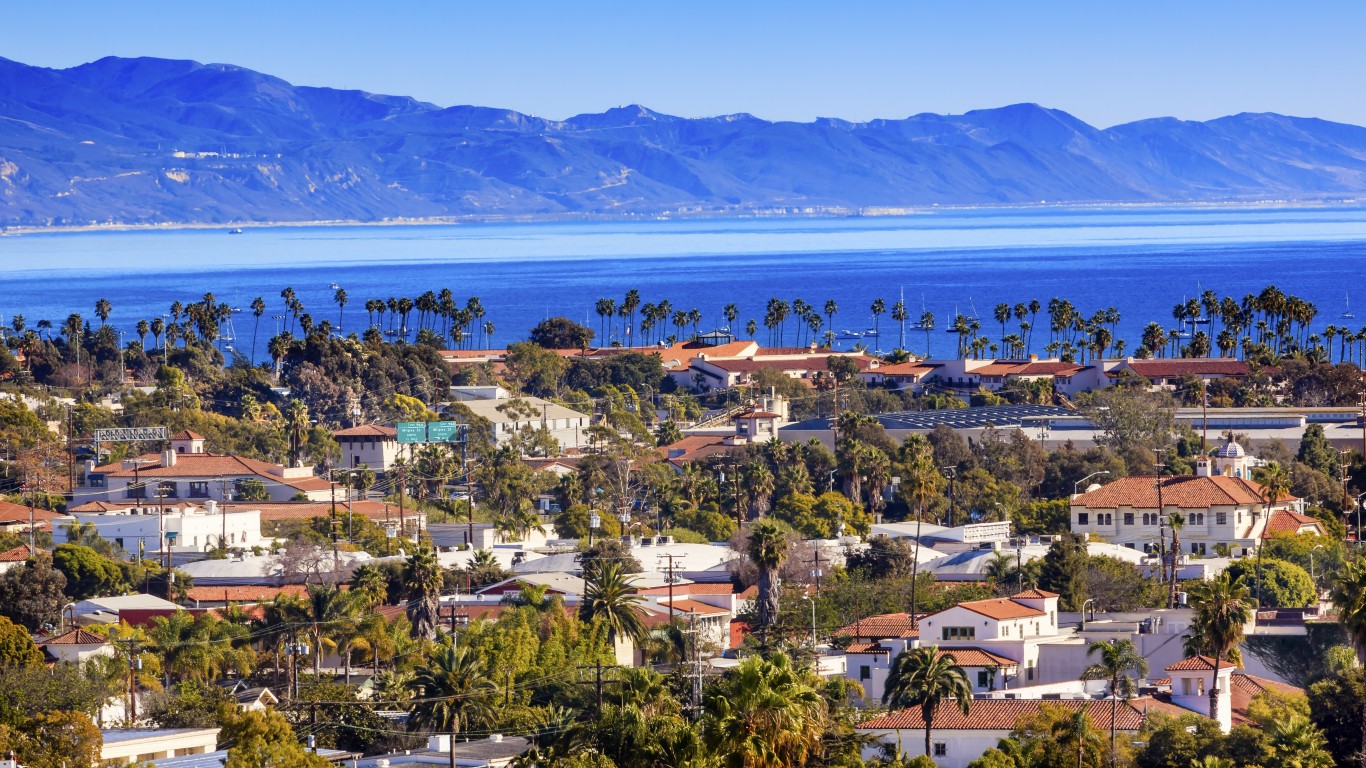
18. Santa Maria-Santa Barbara, CA
> Odds two random residents are from different world regions: 37.8%
> Residents born abroad: 23.0%
> Foreign born residents with U.S. citizenship: 34.3%
> Origin of largest immigrant group: Mexico (67.0% of foreign-born pop.)
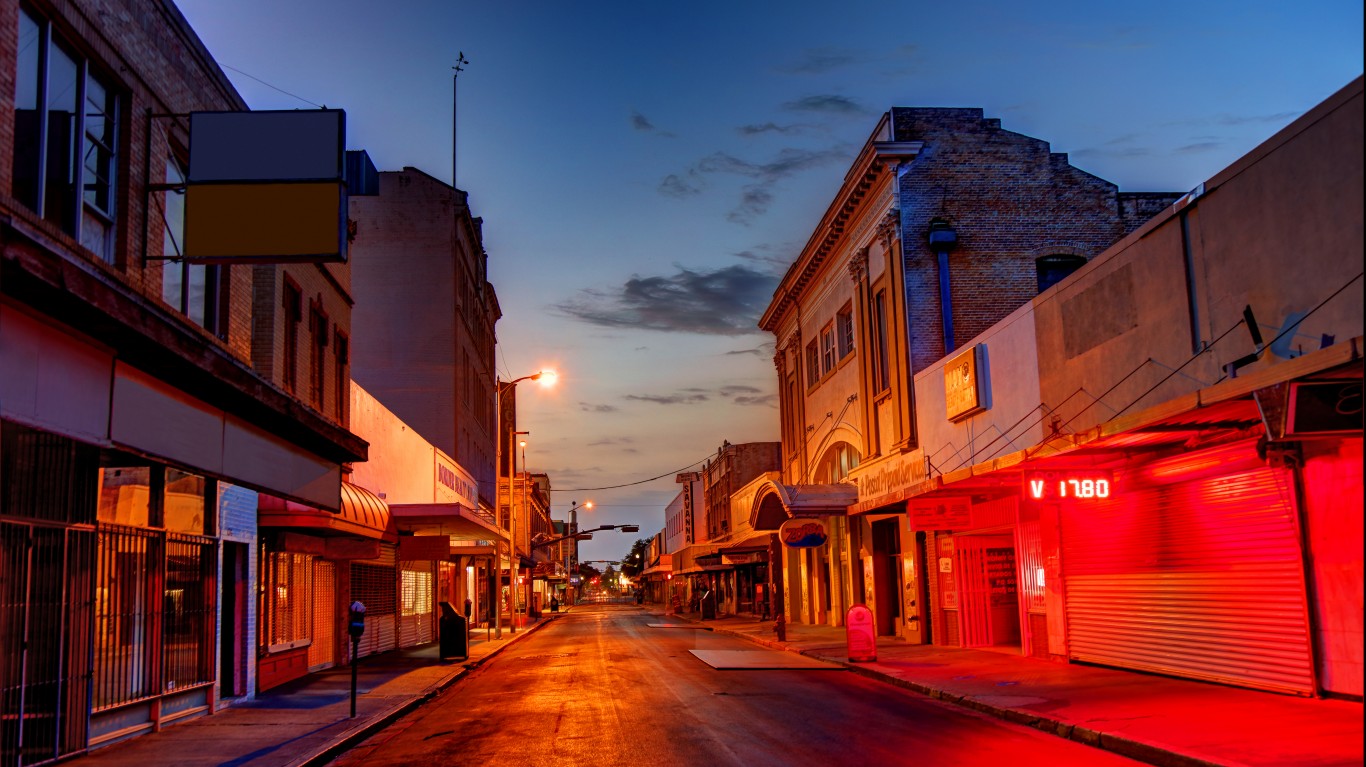
17. Laredo, TX
> Odds two random residents are from different world regions: 38.7%
> Residents born abroad: 25.9%
> Foreign born residents with U.S. citizenship: 29.8%
> Origin of largest immigrant group: Mexico (94.6% of foreign-born pop.)
[in-text-ad-2]

16. Washington-Arlington-Alexandria, DC-VA-MD-WV
> Odds two random residents are from different world regions: 38.7%
> Residents born abroad: 22.8%
> Foreign born residents with U.S. citizenship: 51.8%
> Origin of largest immigrant group: El Salvador (13.8% of foreign-born pop.)
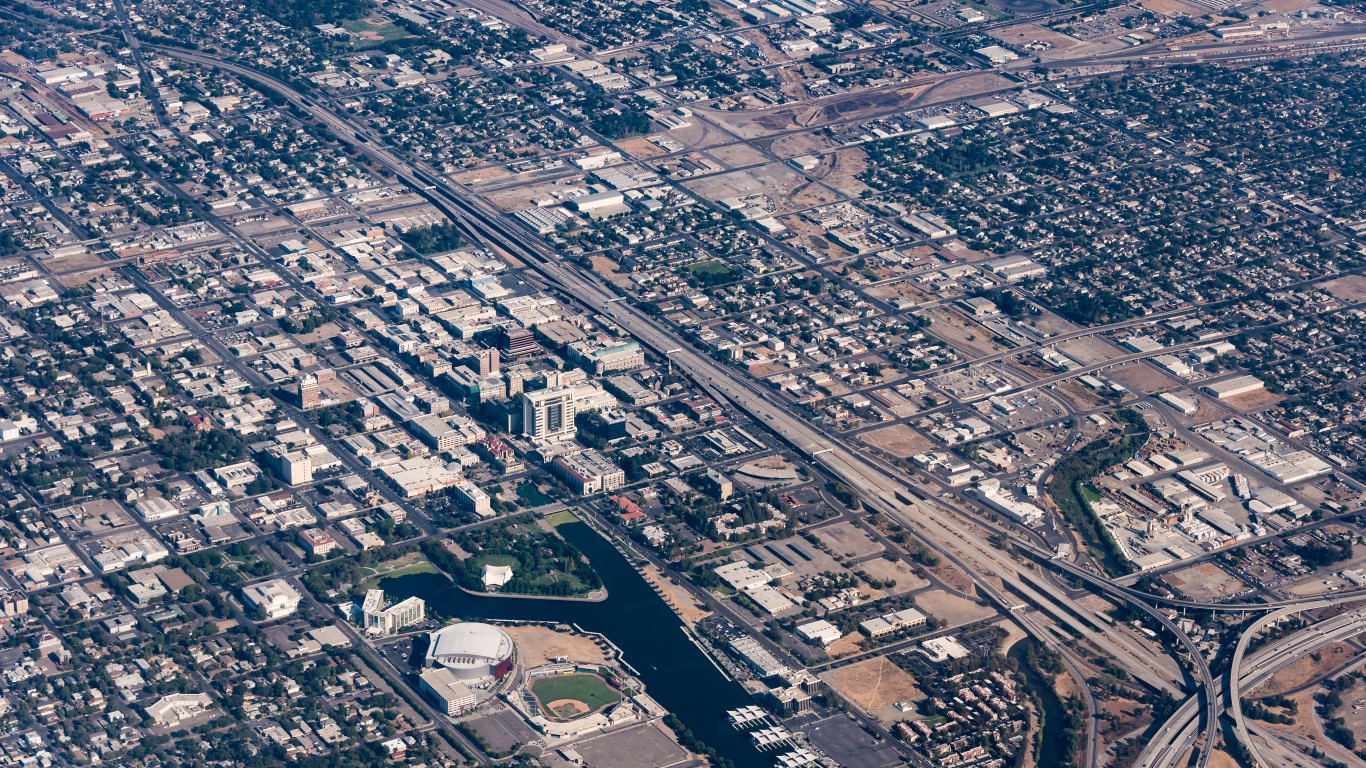
15. Stockton, CA
> Odds two random residents are from different world regions: 38.8%
> Residents born abroad: 23.3%
> Foreign born residents with U.S. citizenship: 49.6%
> Origin of largest immigrant group: Mexico (46.7% of foreign-born pop.)
[in-text-ad]
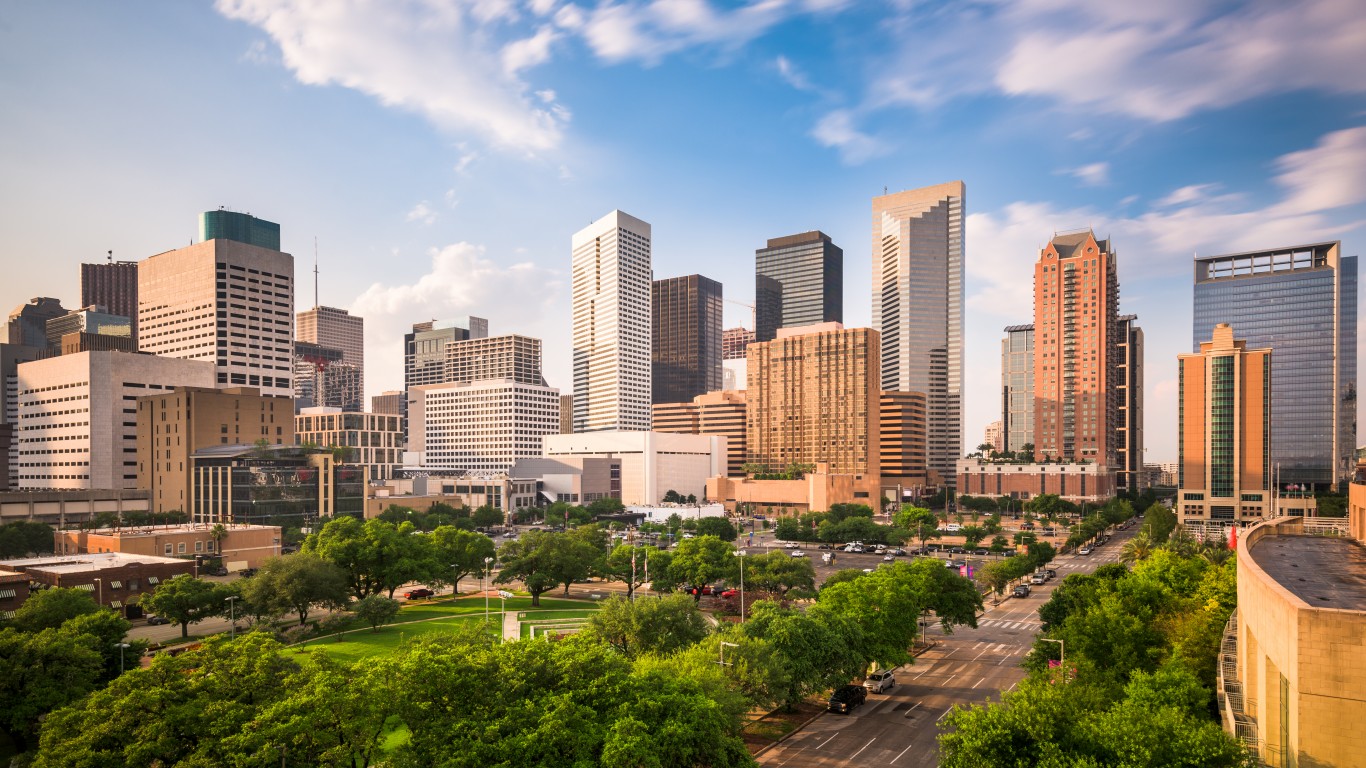
14. Houston-The Woodlands-Sugar Land, TX
> Odds two random residents are from different world regions: 38.9%
> Residents born abroad: 23.4%
> Foreign born residents with U.S. citizenship: 39.5%
> Origin of largest immigrant group: Mexico (38.0% of foreign-born pop.)
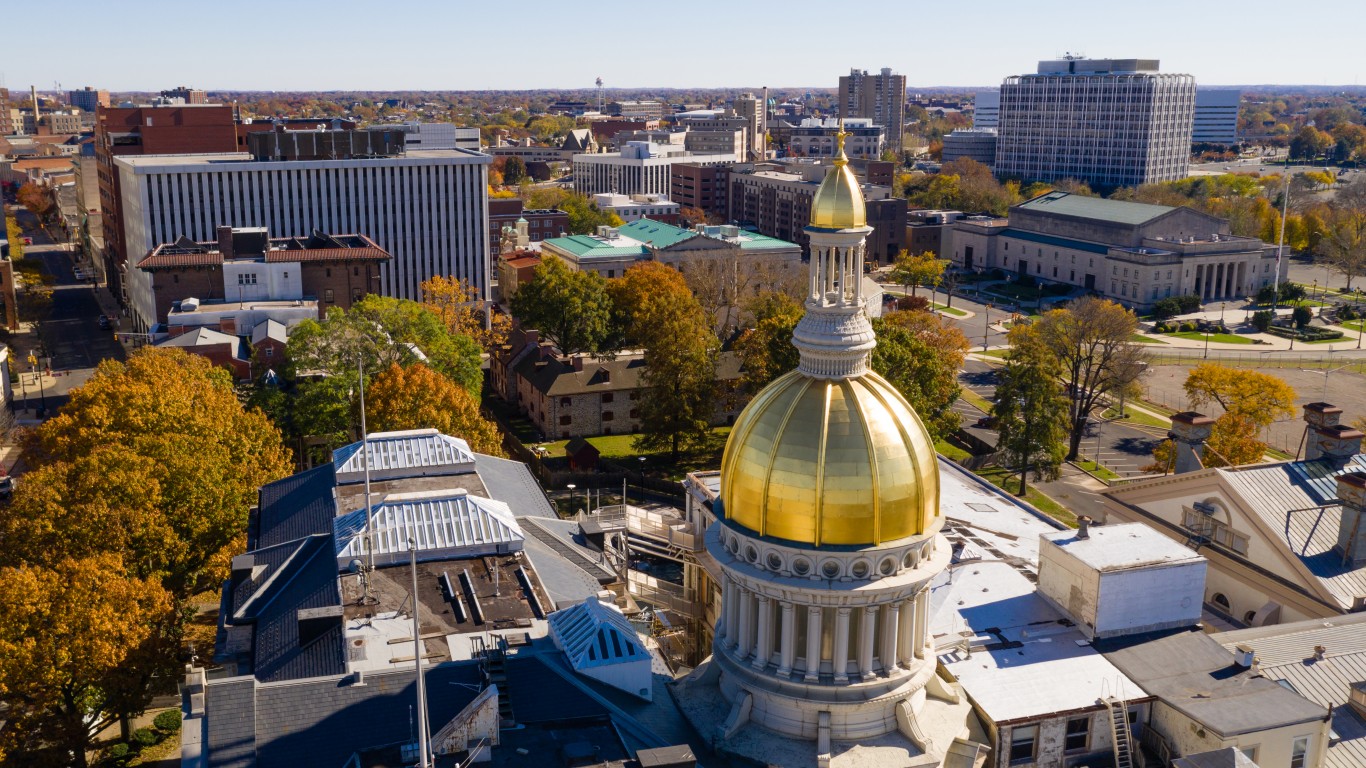
13. Trenton-Princeton, NJ
> Odds two random residents are from different world regions: 38.9%
> Residents born abroad: 22.9%
> Foreign born residents with U.S. citizenship: 48.0%
> Origin of largest immigrant group: India (17.7% of foreign-born pop.)

12. San Diego-Chula Vista-Carlsbad, CA
> Odds two random residents are from different world regions: 39.1%
> Residents born abroad: 23.4%
> Foreign born residents with U.S. citizenship: 54.4%
> Origin of largest immigrant group: Mexico (43.4% of foreign-born pop.)
[in-text-ad-2]
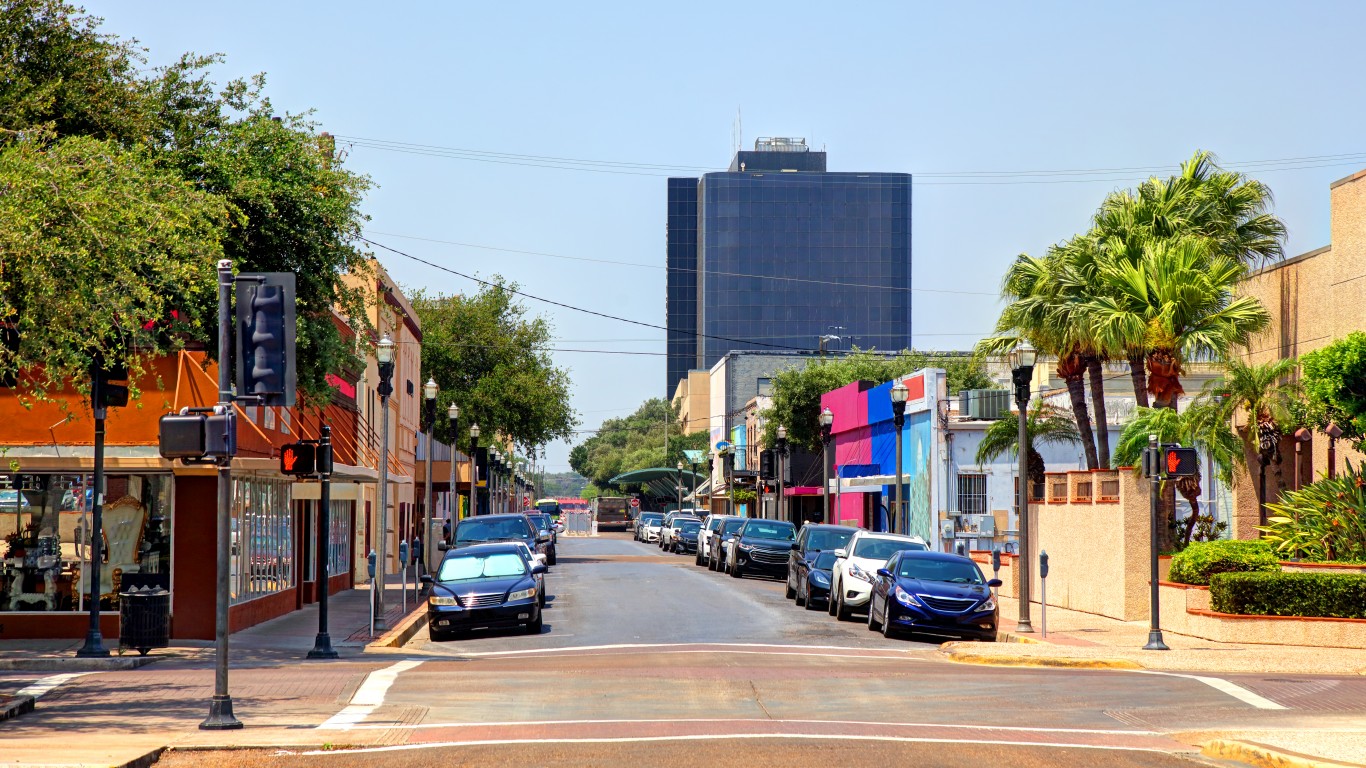
11. McAllen-Edinburg-Mission, TX
> Odds two random residents are from different world regions: 39.7%
> Residents born abroad: 26.8%
> Foreign born residents with U.S. citizenship: 28.0%
> Origin of largest immigrant group: Mexico (93.4% of foreign-born pop.)
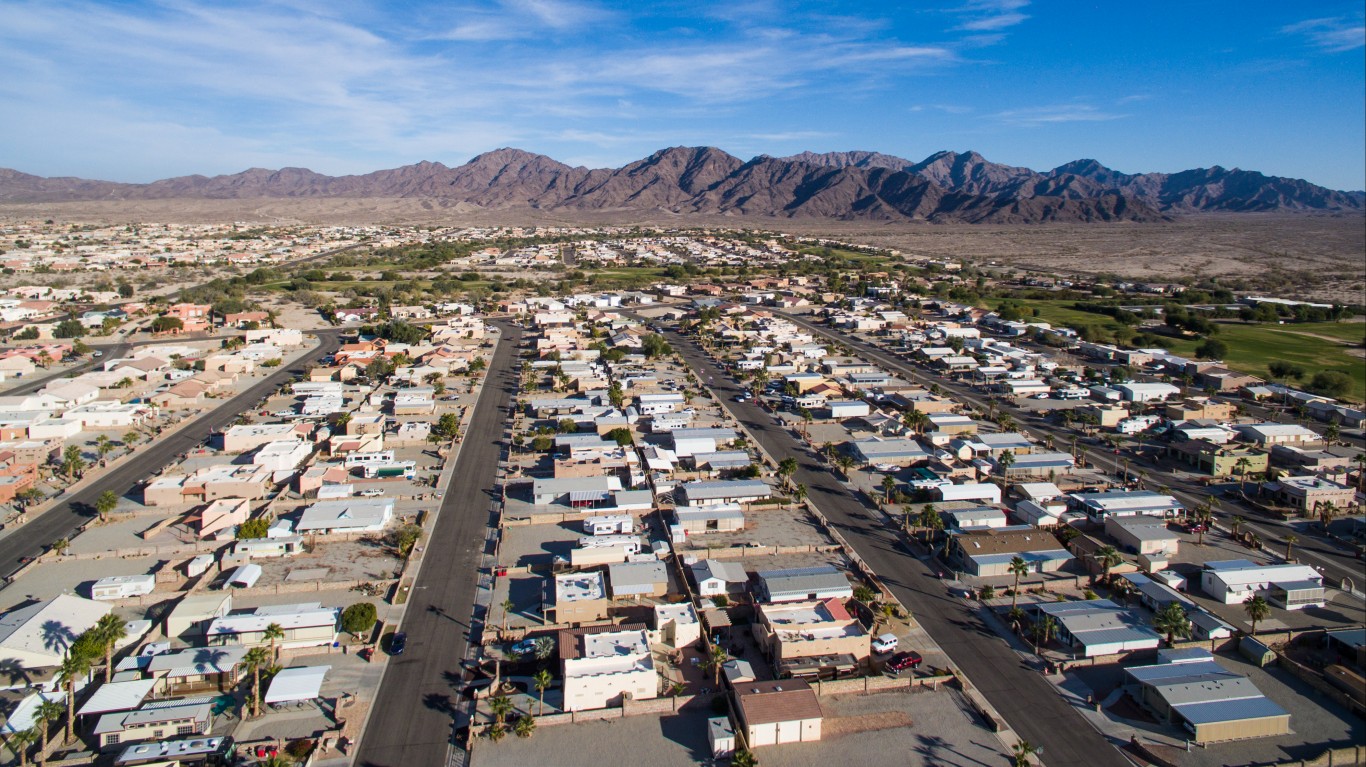
10. Yuma, AZ
> Odds two random residents are from different world regions: 40.2%
> Residents born abroad: 26.3%
> Foreign born residents with U.S. citizenship: 44.9%
> Origin of largest immigrant group: Mexico (86.5% of foreign-born pop.)
[in-text-ad]
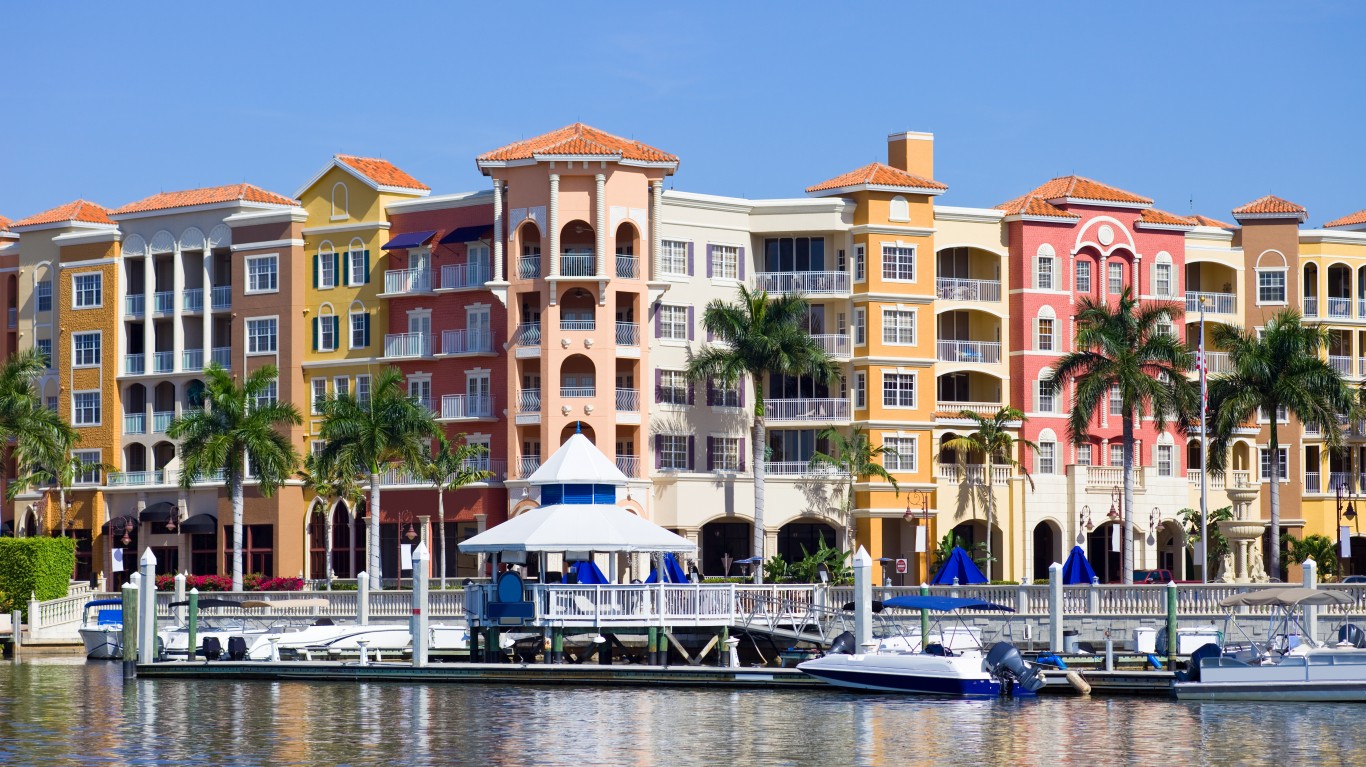
9. Naples-Marco Island, FL
> Odds two random residents are from different world regions: 40.5%
> Residents born abroad: 25.4%
> Foreign born residents with U.S. citizenship: 45.7%
> Origin of largest immigrant group: Cuba (20.5% of foreign-born pop.)
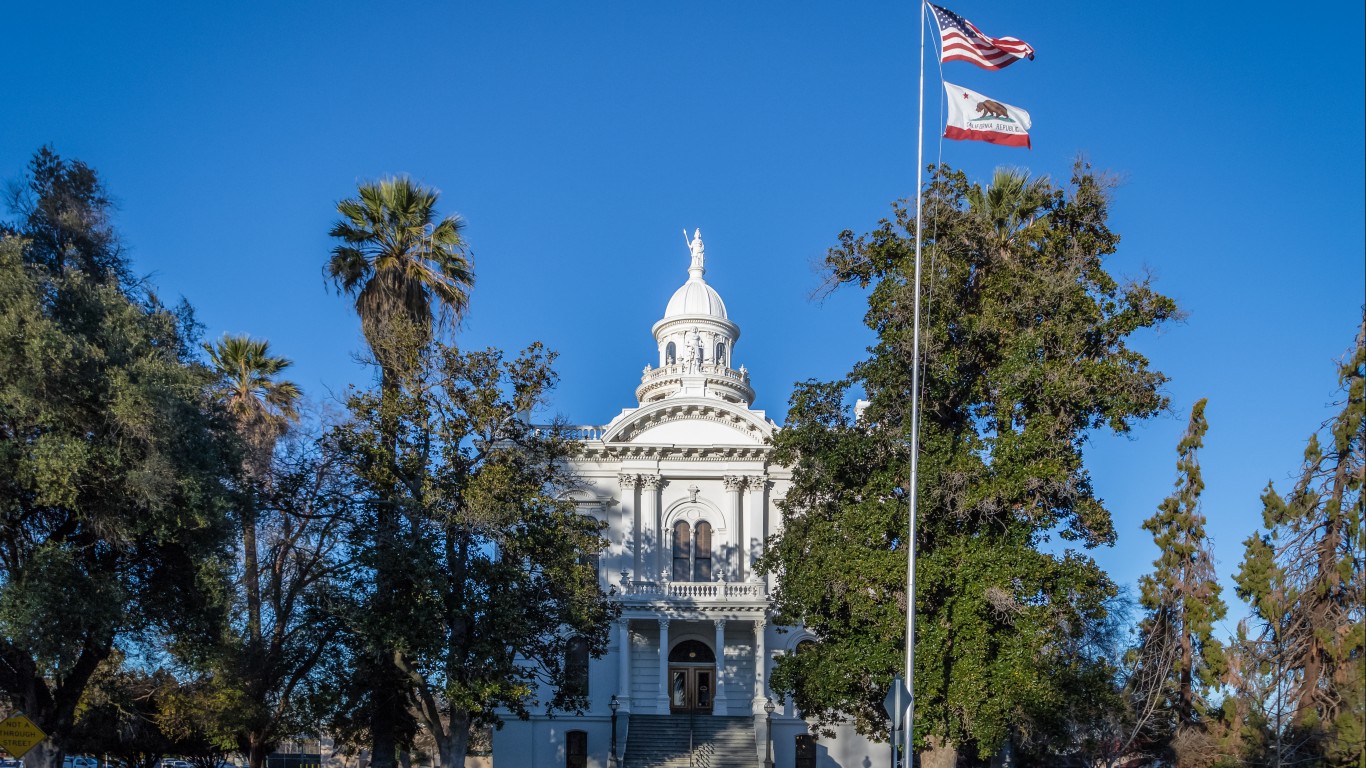
8. Merced, CA
> Odds two random residents are from different world regions: 41.3%
> Residents born abroad: 26.3%
> Foreign born residents with U.S. citizenship: 39.3%
> Origin of largest immigrant group: Mexico (73.2% of foreign-born pop.)
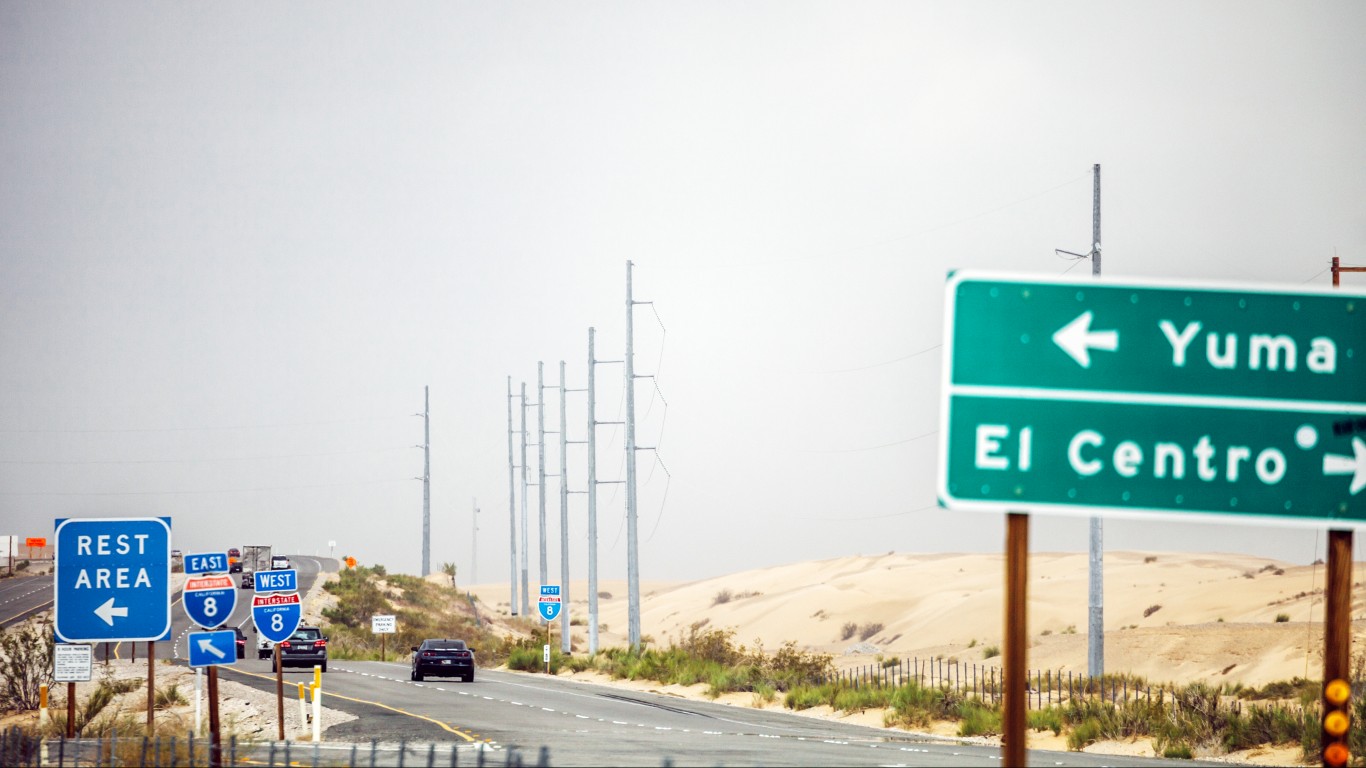
7. El Centro, CA
> Odds two random residents are from different world regions: 43.3%
> Residents born abroad: 30.7%
> Foreign born residents with U.S. citizenship: 51.3%
> Origin of largest immigrant group: Mexico (92.7% of foreign-born pop.)
[in-text-ad-2]
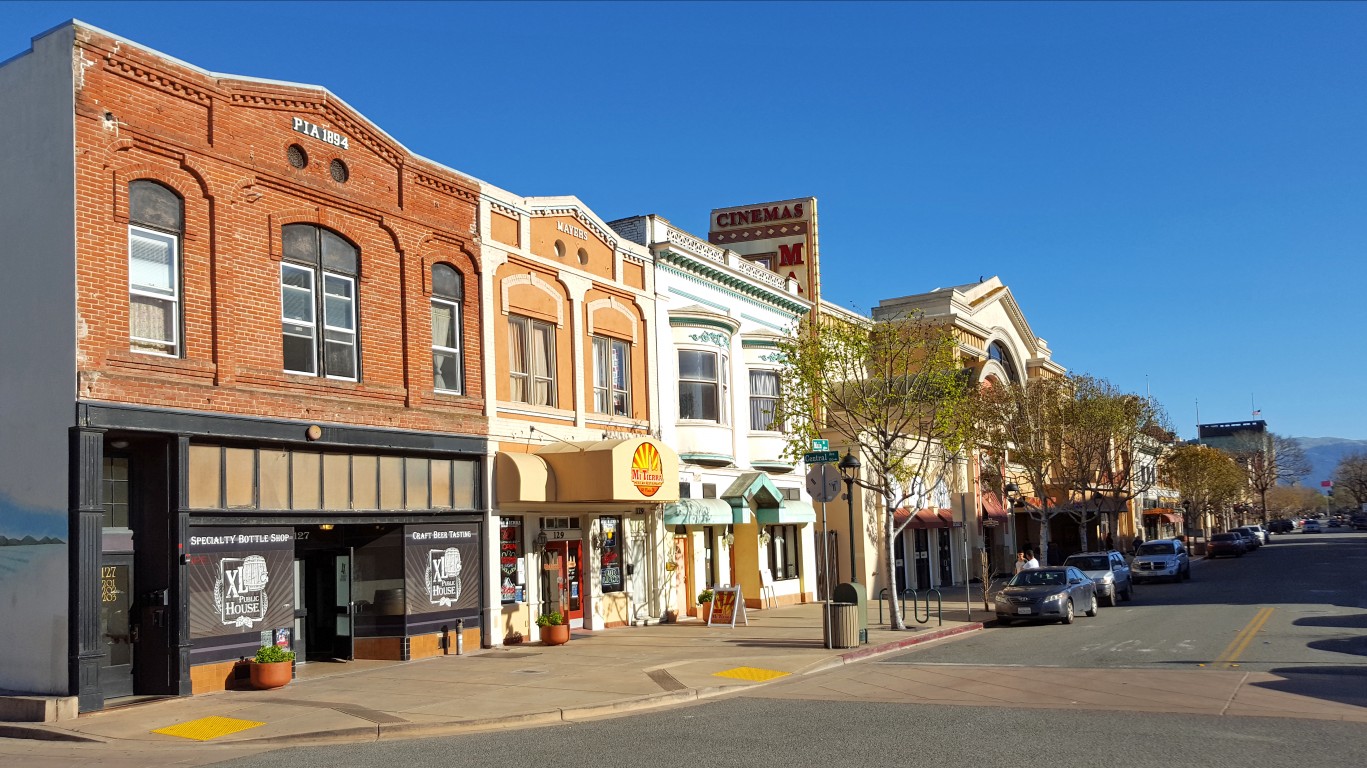
6. Salinas, CA
> Odds two random residents are from different world regions: 44.8%
> Residents born abroad: 29.8%
> Foreign born residents with U.S. citizenship: 27.8%
> Origin of largest immigrant group: Mexico (74.4% of foreign-born pop.)

5. New York-Newark-Jersey City, NY-NJ-PA
> Odds two random residents are from different world regions: 47.1%
> Residents born abroad: 29.5%
> Foreign born residents with U.S. citizenship: 57.2%
> Origin of largest immigrant group: Dominican Republic (11.3% of foreign-born pop.)
[in-text-ad]
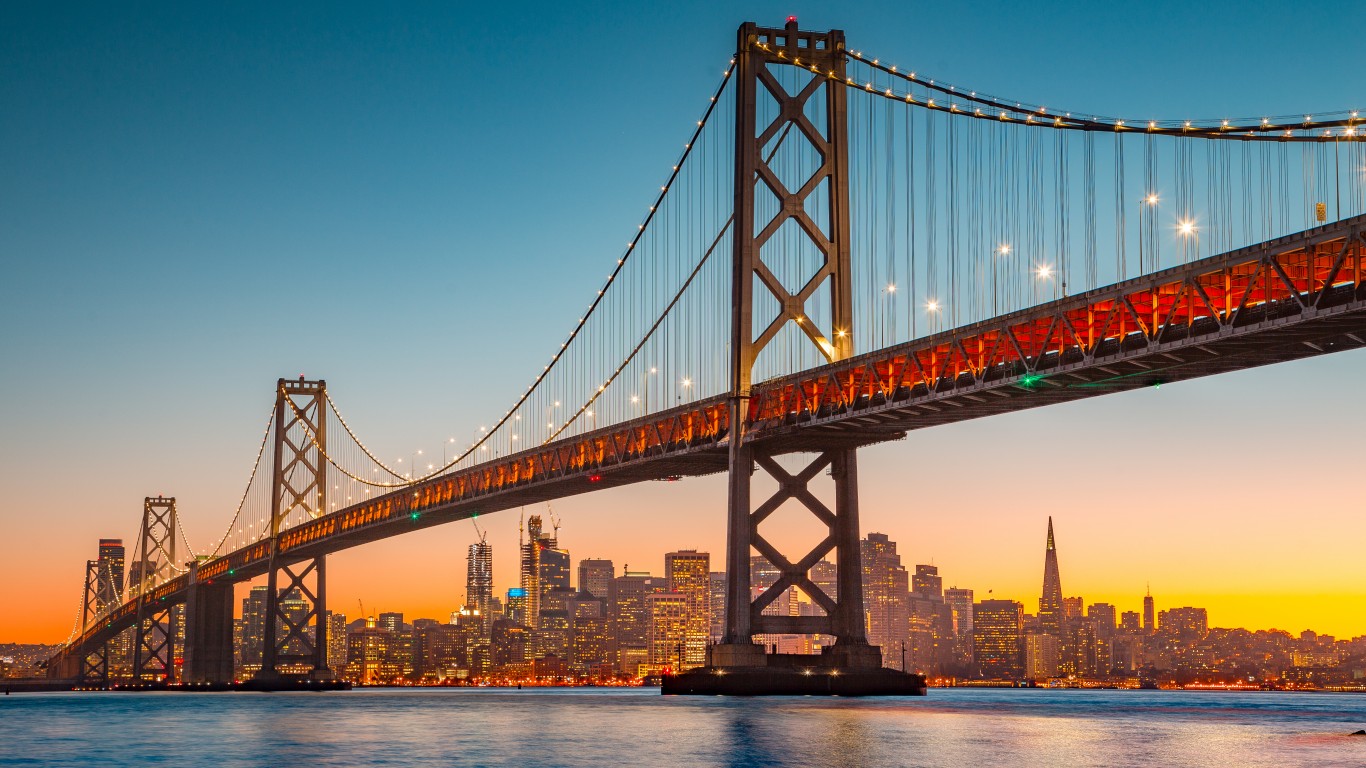
4. San Francisco-Oakland-Berkeley, CA
> Odds two random residents are from different world regions: 48.1%
> Residents born abroad: 30.7%
> Foreign born residents with U.S. citizenship: 56.6%
> Origin of largest immigrant group: Mexico (16.0% of foreign-born pop.)

3. Los Angeles-Long Beach-Anaheim, CA
> Odds two random residents are from different world regions: 50.5%
> Residents born abroad: 33.1%
> Foreign born residents with U.S. citizenship: 52.8%
> Origin of largest immigrant group: Mexico (36.5% of foreign-born pop.)
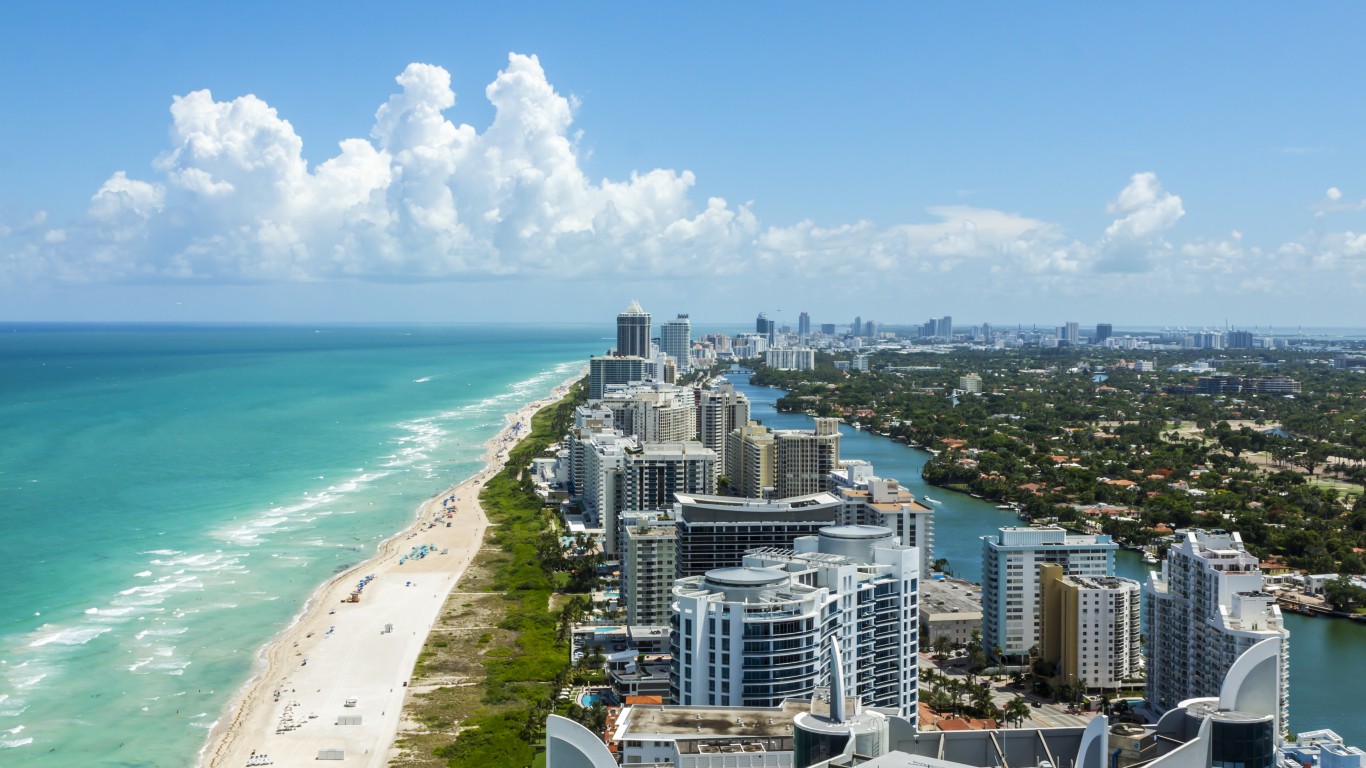
2. Miami-Fort Lauderdale-Pompano Beach, FL
> Odds two random residents are from different world regions: 52.2%
> Residents born abroad: 40.7%
> Foreign born residents with U.S. citizenship: 57.7%
> Origin of largest immigrant group: Cuba (32.0% of foreign-born pop.)
[in-text-ad-2]
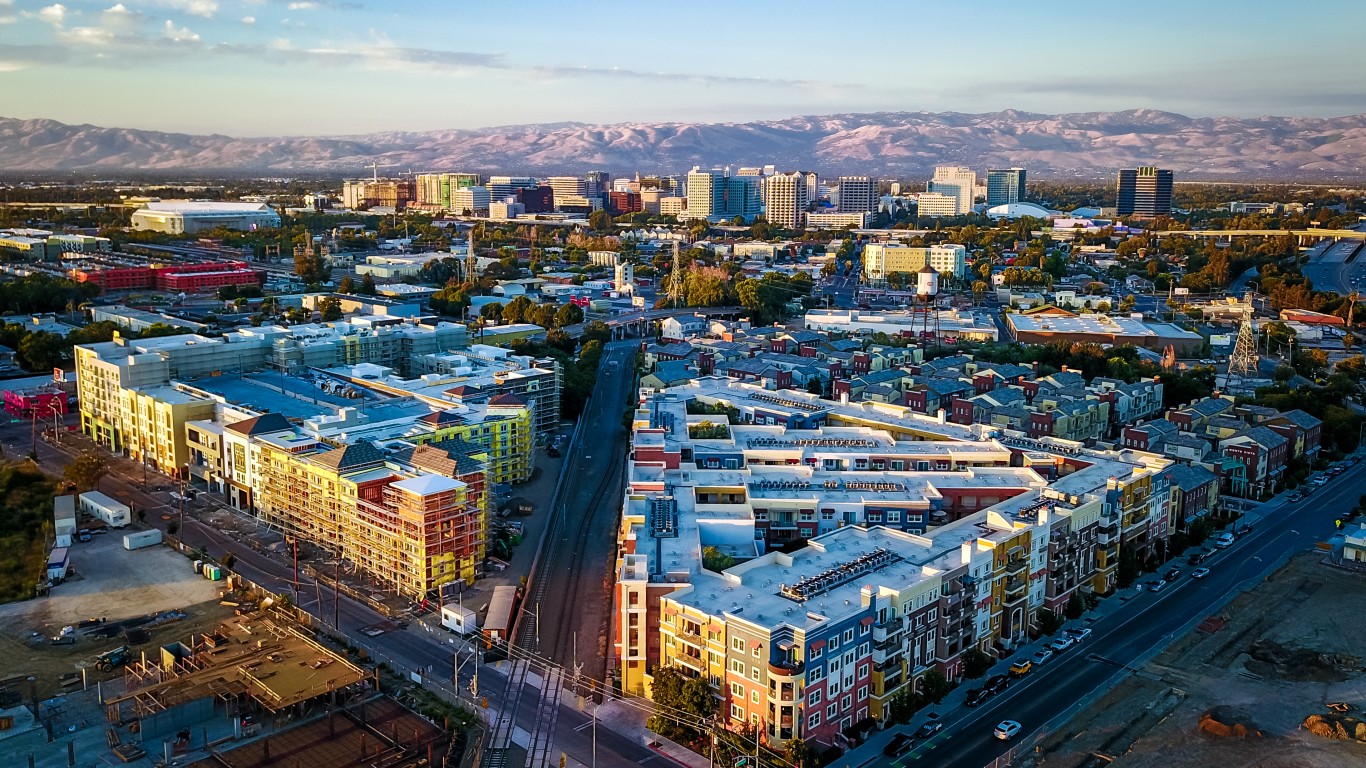
1. San Jose-Sunnyvale-Santa Clara, CA
> Odds two random residents are from different world regions: 54.9%
> Residents born abroad: 38.6%
> Foreign born residents with U.S. citizenship: 53.1%
> Origin of largest immigrant group: Mexico (18.2% of foreign-born pop.)
The Average American Has No Idea How Much Money You Can Make Today (Sponsor)
The last few years made people forget how much banks and CD’s can pay. Meanwhile, interest rates have spiked and many can afford to pay you much more, but most are keeping yields low and hoping you won’t notice.
But there is good news. To win qualified customers, some accounts are paying almost 10x the national average! That’s an incredible way to keep your money safe and earn more at the same time. Our top pick for high yield savings accounts includes other benefits as well. You can earn up to 3.80% with a Checking & Savings Account today Sign up and get up to $300 with direct deposit. No account fees. FDIC Insured.
Click here to see how much more you could be earning on your savings today. It takes just a few minutes to open an account to make your money work for you.
Our top pick for high yield savings accounts includes other benefits as well. You can earn up to 4.00% with a Checking & Savings Account from Sofi. Sign up and get up to $300 with direct deposit. No account fees. FDIC Insured.
Thank you for reading! Have some feedback for us?
Contact the 24/7 Wall St. editorial team.
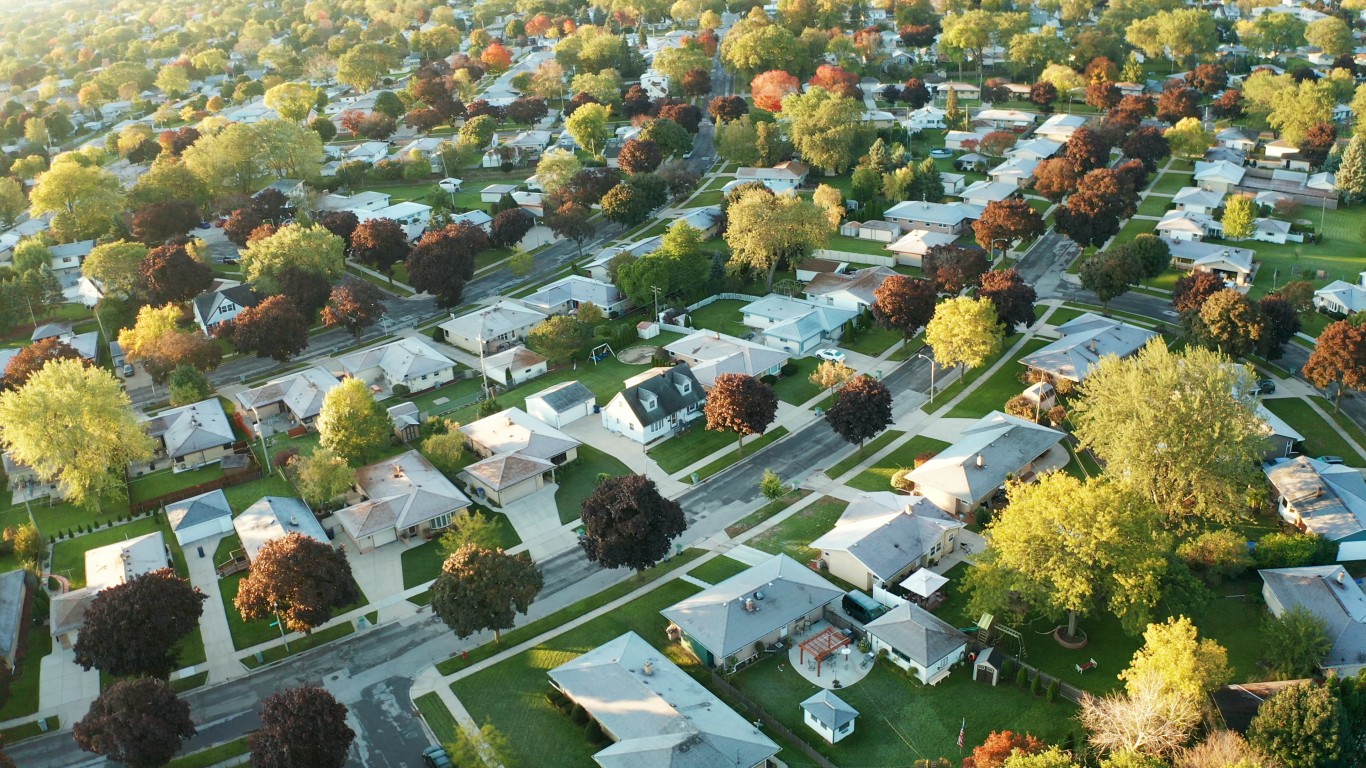 24/7 Wall St.
24/7 Wall St. 24/7 Wall St.
24/7 Wall St. 24/7 Wall St.
24/7 Wall St.